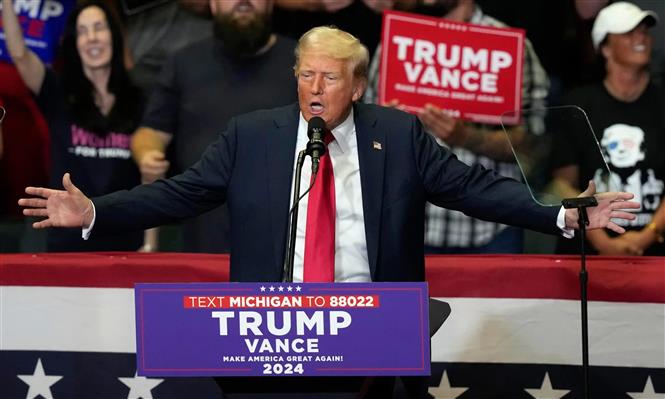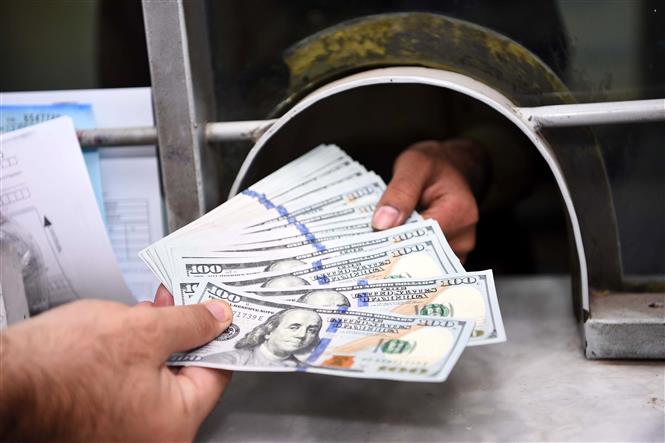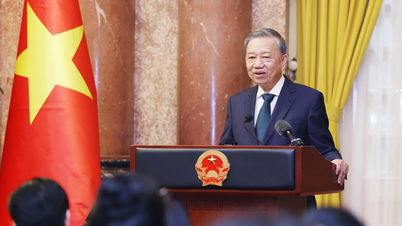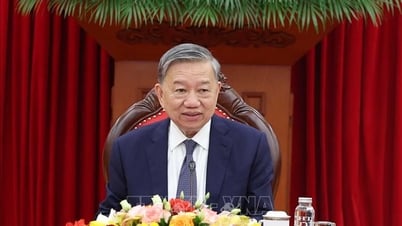
As he was showered with congratulations from world leaders, Mr Trump declared on November 6 that he had been given the “power” to lead the country. If he delivers on even a fraction of his pledges – from higher trade tariffs to deregulation to more oil drilling and more demands on America’s NATO partners – the pressure on government finances, inflation, economic growth and interest rates will be felt in every corner of the world.
Mr Trump's Republicans have also secured control of the Senate and are making progress in the House of Representatives, potentially making it easier for the president to legislate his proposals and push through key appointments.
Impact on America and the world
“Mr Trump’s fiscal commitments are truly troubling – for the US economy and global financial markets – as they will likely significantly widen the already excessive deficit while threatening to undermine key institutions,” said Erik Nielsen, chief economic adviser at UniCredit Group.
Mr. Nielsen also said that the US Treasury bond market also faces serious risks due to potential policy changes, and thereby global financial stability.
The import tariffs, which include a 10% tariff on imports from all foreign countries and a 60% tariff on imports from China, are a key Trump policy and are likely to have the biggest global impact, economists say.
Tariffs impede global trade, reduce growth for exporters and put pressure on the public finances of all parties involved. They are likely to increase inflation in the US, forcing the Federal Reserve to act with tighter monetary policy.
US stocks closed sharply higher in a broad rally on November 5 after data signaled a solid economy.
The International Monetary Fund (IMF) has described current global growth as weak, with most countries experiencing “weak” expansions. Against this backdrop, a further hit to global trade is likely to pose a downside risk to the fund’s 3.2% GDP growth forecast for next year.
Companies largely pass on import costs to customers, so tariffs are likely to be inflationary for US buyers, forcing the Fed to keep interest rates high for longer or even reverse course and raise borrowing costs again.
That is even more likely if Mr. Trump sticks to his spending and tax pledges — actions that could add $7.75 trillion to the U.S. debt by 2035, according to the Committee for a Responsible Federal Budget, a nonpartisan panel.
“Higher inflation would weigh on domestic demand, especially as it would require a limited monetary policy response, with negative implications for growth,” said Anis Bensaidani at BNP Paribas.

Emerging markets in trouble
For emerging markets reliant on dollar funding, such a policy mix would make borrowing more expensive, with a double whammy of lost exports (due to higher tariffs).
The force pushing up US inflation could also put pressure on prices elsewhere, especially if Mr Trump imposes steep tariffs on China as he has promised.
As the world's largest exporter, China is desperate to revive growth, so it may seek new markets for goods squeezed out of the US and dump products elsewhere, particularly Europe.
Central banks will likely react quickly as business sentiment (especially in open economies that depend on trade) will deteriorate rapidly.
“Even before the survey declines, the ECB (European Central Bank) could accelerate its rate cuts to 2%, and as US tariff policies become clearer, a cut below neutral would be appropriate,” said Greg Fuzesi at JP Morgan. (A neutral rate is one that neither stimulates economic growth nor puts downward pressure on growth.)
Governments around the world are also likely to retaliate against any US import tariffs, further stifling trade and cutting deeper into global growth.
Higher Fed rates and lower borrowing costs elsewhere will also boost the US dollar, causing more pain for emerging markets, as more than 60% of international debt is denominated in dollars. (And the euro and yen fell 1.5% overnight on November 5 as evidence.)
Mexico could be the country hardest hit by Mr Trump's comments about closing the border, while the domestic economic outlook is worsening.
“Mexico is most at risk,” said TSLombard analyst Jon Harrison, as the Mexican peso fell 3% against the dollar on Nov. 5.
Mexico is particularly vulnerable because trade tensions and deportation threats can exacerbate domestic problems like gang activity and government failure to curb violence, Harrison said.
Meanwhile, there are also beneficiaries, and one of them is Brazil, which has benefited from greater trade with China because Beijing replaced all of its soybean imports from the US with Brazilian soybeans when trade tensions flared during Mr. Trump's first term.
According to Al Jazeera, Swiss bank UBS estimates that a 60% tariff on Chinese goods and a 10% general tariff would reduce global economic growth by 1% by 2026.
A study by analysts at the London School of Economics and Political Science predicted that China's gross domestic product (GDP) would shrink by 0.68% and the European Union's GDP would shrink by 0.11%. Meanwhile, India, Indonesia and Brazil would see their GDPs fall by 0.03%, 0.06% and 0.07%, respectively, according to the study.
Europe under financial pressure
Europe could also suffer the additional blow of rising defense costs if Mr Trump reduces support for NATO.
The continent has relied on a US military presence since the end of World War II and with the conflict in Ukraine still unresolved, Europe would be forced to fill any void left by a potential US withdrawal.
But government debt in Europe has reached nearly 90% of GDP, so finances are strained and governments will struggle to stimulate economies plagued by trade barriers while still having to fund military spending.
Source: https://doanhnghiepvn.vn/quoc-te/chien-thang-cua-ong-trump-se-tac-dong-nhu-the-nao-doi-voi-kinh-te-toan-cau/20241106115631826




![[Photo] "Lovely" moments on the 30/4 holiday](https://vphoto.vietnam.vn/thumb/1200x675/vietnam/resource/IMAGE/2025/5/1/26d5d698f36b498287397db9e2f9d16c)
![[Photo] Binh Thuan organizes many special festivals on the occasion of April 30 and May 1](https://vphoto.vietnam.vn/thumb/1200x675/vietnam/resource/IMAGE/2025/5/1/5180af1d979642468ef6a3a9755d8d51)
![[Photo] Ha Giang: Many key projects under construction during the holiday season](https://vphoto.vietnam.vn/thumb/1200x675/vietnam/resource/IMAGE/2025/5/1/8b8d87a9bd9b4d279bf5c1f71c030dec)






























































































Comment (0)